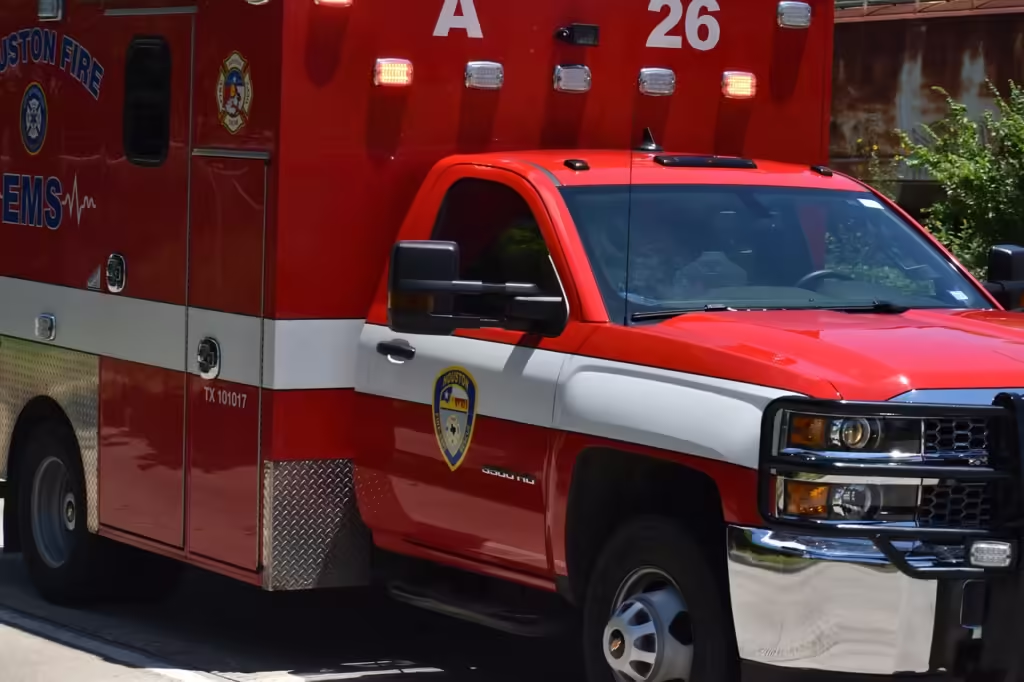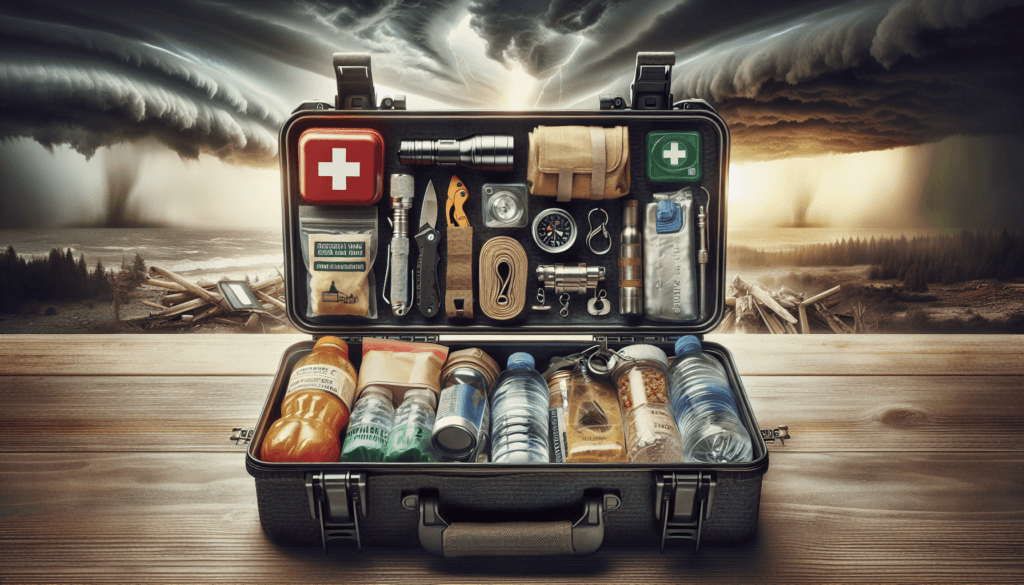In an era where natural disasters are increasingly prevalent and devastating, “Safety First: An Essential Guide to natural disaster preparedness” serves as an invaluable resource for ensuring your safety and that of your loved ones. This guide delves into the historical context of natural disaster responses, examines current preparedness trends, and elucidates key concepts and definitions to enhance your understanding. Through detailed exploration and compelling case studies, the article dissects methodologies and strategies that have proven effective in safeguarding communities. Furthermore, it provides a balanced comparison of different preparedness approaches and assesses their impact through evidence-based analysis. Looking forward, the guide also offers insightful predictions and discusses the broader implications of disaster preparedness on society. By the end of the article, you will be well-equipped with the knowledge and tools necessary to face natural disasters with confidence and resilience. Have you ever wondered if you are truly prepared for a natural disaster? With the increasing frequency and intensity of natural disasters globally, it is crucial to ask yourself this pertinent question.

This image is property of pixabay.com.
Table of Contents
Overview
natural disasters such as earthquakes, hurricanes, floods, wildfires, and tornadoes can strike without warning, leaving devastation in their wake. In recent years, the frequency and severity of these disasters have alarmingly increased, emphasizing the need for preparedness. This guide aims to highlight the importance of natural disaster preparedness, ensuring you have the vital knowledge and tools to keep you and your loved ones safe.
Thesis Statement
Natural disaster preparedness is an essential component of safety planning, providing individuals and communities with the knowledge and tools required to survive and recover from catastrophic events. This guide offers a comprehensive overview of historical contexts, current trends, key concepts, and strategies for effective natural disaster preparedness.
Historical Context
Understanding the history of natural disasters helps to appreciate the significance of preparedness. Throughout history, natural disasters have caused unprecedented destruction and loss. For instance, the 1906 San Francisco earthquake, with a magnitude of approximately 7.9, resulted in nearly 3,000 deaths and widespread destruction. Similarly, the 2004 Indian Ocean tsunami, which was triggered by a 9.1 magnitude undersea earthquake, killed an estimated 230,000 people across 14 countries. These events underscore the unpredictable and devastating nature of natural disasters.
Current Trends
Recent data indicate a spike in the frequency of natural disasters, possibly attributed to factors like climate change and urbanization. For example, the Atlantic hurricane season has shown increased activity, and wildfires have become more frequent in regions such as California and Australia. A study by the National Oceanic and Atmospheric Administration (NOAA) revealed that the number of billion-dollar weather and climate disasters in the United States has been on a significant upward trend over the past few decades. These trends highlight an urgent need for enhanced disaster preparedness at both individual and community levels.

This image is property of pixabay.com.
Key Concepts and Definitions
Natural Disaster
A natural disaster is a catastrophic event caused by natural processes of the Earth, including earthquakes, floods, hurricanes, and wildfires. These events can have devastating consequences, affecting human lives, infrastructure, and the environment.
Preparedness
Preparedness refers to the measures taken to plan, organize, and structure responses to potential natural disasters. It includes creating emergency plans, resource allocation, and conducting training and drills for effective disaster response and recovery.
Resilience
Resilience is the ability of individuals, communities, and systems to withstand, adapt to, and recover from natural disasters. Building resilience involves strengthening infrastructure, enhancing community awareness, and fostering adaptive skills.
Detailed Exploration
Home Preparedness
home preparedness is a critical aspect of natural disaster readiness. This involves creating a detailed emergency plan, assembling a comprehensive emergency kit, and fortifying your home against potential hazards.
Emergency Plan
An effective emergency plan should include:
- Evacuation Routes: Clearly marked and well-communicated pathways to safety.
- Communication Plan: Designated points of contact and methods for communicating with family members during and after a disaster.
- Medical Information: Documentation of medical conditions, prescriptions, and contact information for healthcare providers.
Emergency Kit
Your emergency kit should contain:
- Essential Supplies: Non-perishable food, water, medications, and hygiene products for at least three days.
- Tools and Equipment: Flashlight, batteries, multi-purpose tool, and a first-aid kit.
- Important Documents: Copies of identification, insurance policies, and financial records.
Community Preparedness
Community preparedness involves collective efforts to enhance disaster resilience. Communities can organize awareness programs, conduct regular drills, and establish local response teams.
- Community Awareness Programs: Informative sessions on natural disaster preparedness tailored to specific hazards in the region.
- Regular Drills: Conducting simulated disaster scenarios to ensure readiness.
- Local Response Teams: Formation of volunteer groups trained in basic emergency response skills.
Case Study 1: Japan’s Earthquake Preparedness
Japan’s advanced earthquake preparedness measures offer a compelling example. Following the catastrophic 2011 Tōhoku earthquake and tsunami, Japan implemented stringent building codes and early warning systems. These measures have significantly reduced casualties and damage in subsequent seismic events. Japan’s experience underscores the effectiveness of proactive preparedness strategies in mitigating disaster impacts.
Case Study 2: Hurricane Katrina
Hurricane Katrina, which struck New Orleans in 2005, serves as a crucial lesson in disaster management. The hurricane exposed significant gaps in preparedness, communication, and response at various governmental levels. In its aftermath, there have been structural and policy changes aimed at improving hurricane preparedness and response, illustrating the importance of learning from past disasters.

This image is property of pixabay.com.
Comparison of Different Perspectives
Top-Down vs. Bottom-Up Approaches
disaster preparedness strategies can be categorized into top-down (government-led) and bottom-up (community-led) approaches. Both perspectives offer unique advantages and challenges:
Top-Down Approaches: Managed by governmental agencies, these strategies involve large-scale resource allocation and centralized planning. They can efficiently mobilize resources but may face bureaucratic delays.
Bottom-Up Approaches: Initiated by local communities, these strategies focus on localized needs and foster community participation. They can be more flexible but might lack sufficient resources.
Impact Assessment
Analyzing the outcomes of these differing approaches provides valuable insights. Top-down approaches can ensure wide coverage and resource availability, but may struggle to address specific local needs. Conversely, bottom-up approaches can tailor responses to local contexts but might lack the necessary support for widespread implementation. Optimal preparedness strategies often integrate both approaches, leveraging the strengths of each to enhance effectiveness.
Future Directions and Implications
Predictions
Future trends in natural disaster preparedness are likely to focus on technology integration and sustainability. Innovations such as the use of artificial intelligence for predictive modeling, drone technology for immediate response, and the development of smart infrastructure are expected to revolutionize disaster preparedness and response.
Implications
The implications of these advancements extend beyond immediate safety. Enhanced natural disaster preparedness contributes to long-term resilience, economic stability, and social well-being. By investing in comprehensive preparedness strategies, societies can mitigate the catastrophic impacts of natural disasters and ensure quicker recovery post disaster.

Conclusion
Recap
Effective natural disaster preparedness is not just a safety measure but a crucial aspect of resilience and sustainability. Historical data and current trends both underscore the increasing frequency and intensity of natural disasters, making preparedness more pertinent than ever. Various approaches, ranging from home and community preparedness to analysis of case studies, highlight the importance of proactive measures.
Final Thought
As you consider your own level of preparedness, think about the broader implications for your community and society at large. Are you equipped to handle a natural disaster? This question should drive ongoing efforts to enhance preparedness and resilience.
Engagement
We encourage you to comment on your own experiences with natural disasters, share this guide with your community, and explore additional resources for comprehensive preparedness strategies.
Credible Sources
- National Oceanic and Atmospheric Administration (NOAA)
- American Red Cross
- Federal Emergency Management Agency (FEMA)
- Centers for Disease Control and Prevention (CDC)
- World Health Organization (WHO)
By understanding and implementing the strategies discussed in this guide, you can significantly enhance your readiness for natural disasters. Remember, safety first always!

